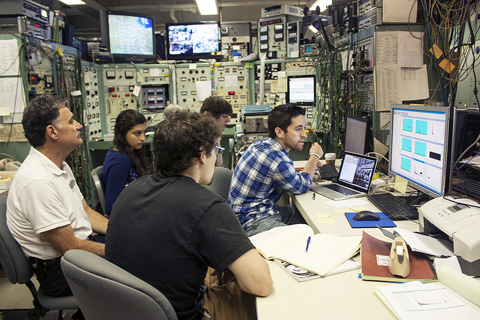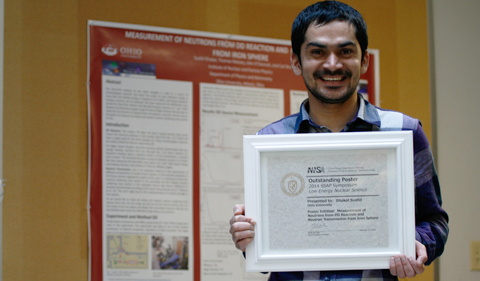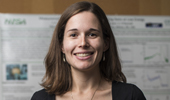This summer Prof. Stephen Padalino from the State University of New York at Geneseo and Prof. Mark Yuly from Houghton College and 10 of their undergraduate research students will be using the tandem accelerator at the John E. Edwards Accelerator Laboratory at Ohio University to make high energy neutrons related to inertial confinement fusion (ICF).
This work is in support of the ICF research performed at the Laboratory for Laser Energetics (LLE) at the University of Rochester. At LLE, intense laser light is deposited on a spherical target capsule the size of the ball-point in a pen. The capsule, which contains frozen deuterium and tritium fuel, is heated for a billionth of a second by the second most powerful ICF laser in the world, the LLE OMEGA-60 laser system.
This fast heating by OMEGA 60 causes a very rapid capsule implosion to occur, which initiates a thermo nuclear reaction at the center of the capsule. This reaction is similar to those that occur in stars. The reaction produces many high energy products such as protons, neutrons, gamma and x-rays which are emitted into the reaction chamber. In order to characterize and understand the fusion reaction, nuclear diagnostics are deployed in the reaction chamber to measure these products. One such diagnostic that is under development is the purified graphite activation detector. This detector may be placed at several locations within the ICF target chamber to measure high energy neutrons produced by very hot ICF implosions. The biggest remaining obstacle to the implementation of this diagnostic technique is that it requires an accurate knowledge of the 12C(n,2n) reaction cross section, which has not been well-measured to this date.
The accelerator at Ohio University is one of the few machines in the world that can provide the high energy monoenergetic neutrons needed to study this reaction at a variety of bombarding energies. This collaboration currently working on this measurement in composed of students, faculty and staff from Ohio University, Houghton College and the State University of New York. The group of some 20 people demonstrates how the nuclear physics community pools their resources and knowledge to perform advanced science and involve graduate as well as undergraduate students in sophisticated experiments.
What is particularly valuable to students at the Ohio University facility is how they are welcomed into the accelerator lab and allowed to participate in every aspect of the experiment – from designing detector systems, to configuring electronics, analyzing data and running the accelerator. It is truly a wonderful hands-on learning experience for the visiting undergraduate students from Houghton and SUNY Geneseo.
This research is funded in part by the University of Rochester Laboratory for Laser Energetics through a grant from the Department of Energy.
Dr. Carl R. Brune, Professor of Physics and Astronomy, hosted the visiting team. He also is Director of the Institute for Nuclear & Particle Physics, which coordinates both theoretical and experimental subatomic physics at Ohio University’s College of Arts & Sciences. Ohio University staff members Devon Jacobs, Don Carter, and Tom Massey, and Ohio University graduate students are assisting the visitors with their experiments.




















Comments